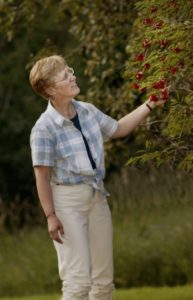Whether you need to know if your tree is a total loss after a severe storm, or how much your landscaping trees contribute to your overall property value, it is important to use an effective method of valuation. If you are interested in knowing the value of your landscaping trees, continue reading to learn the most common method for tree appraisals, and who to call for professional and honest service in your town.
Tree Appraising
There are several technical methods for appraising tree value, but many involve confusing legal jargon, property loss factors, and tax codes. The easiest and most common method for evaluating the worth of landscaping trees involves a much simpler approach. It is called the “trunk method”, and works well for informal tree valuations. This method uses a mathematical formula, with each influential factor making up a certain percentage in the equation. The top 3 factors applied to obtain an overall value include tree species, location, and condition. Base value and cross section area are additional components to the trunk method equation, but are more complex because they are computed using equated market values and trunk measurements.
Tree Value = Base Value × Cross Section Area × Species × Condition × Location
Top 3 Key Elements:
Tree Species – The species of a tree is important because it identifies the quality of the wood, blooms, and yields. But tree species also ascertains its attractiveness, adaptability, and its overall desirability. Species of tree that retain weed-like qualities are less valuable than quality hardwoods and ornamental trees. For instance, an Oak tree retains a 100% species value, while a Black Gum retains only 30% value. Also, conifers tend to have more value than deciduous species.
Tree Location – In terms of appraising real estate, location is always a major factor. The same theory applies to tree value. When a tree is located in an area that provides indoor energy efficiency for a home, shade for the patio or backyard, or privacy from public roads or neighbors, it can be more valuable than a tree that is hidden within an isolated copse. Also, trees that add beauty to the property are more valuable too; a tree in the front of the house is more valuable than trees in a wooded back area of the property.
Tree Condition – The overall condition of the tree is important in determining its value. This includes a tree’s age, roots, health, and strength. Mature trees are very valuable compared to newly-planted ones. And unhealthy trees are less valuable than ones that are free of wounds, pest infestations, and disease. Also, if a tree poses a potential hazard, they are not only lower in value themselves, they can also lower the overall property value if not remedied. Common hazards include trees that are dying, leaning, or obstructing power lines and property.
Is Your Tree a Loss?
If you need to know the value of your tree in order to determine whether or not it is a loss and should be removed, it is recommended to hire a professional Noblesville tree care company for an accurate assessment and proficient service. They have the experience, knowledge, and resources to assess the overall needs of your tree and implement them safely and effectively, all in a convenient time frame.




